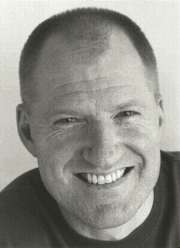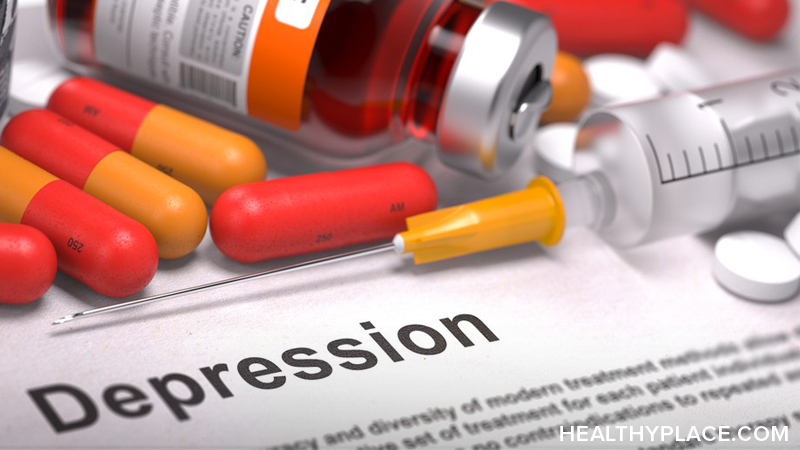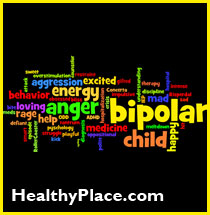
Licorice is a herbal remedy used to relieve respiratory ailments, skin diseases and stomach problems. Learn about the usage, dosage, side-effects of Licorice.
Botanical Name:Glycyrrhiza glabra
Common Names:Spanish licorice, sweet root
Overview
Licorice (Glycyrrhiza glabra) is a flavorful herb that has been used in food and medicinal remedies for thousands of years. Also known as "sweet root," licorice root contains a compound that is roughly 50 times sweeter than sugar. Licorice root has been used in both Eastern and Western medicine to treat a variety of illnesses ranging from the common cold to liver disease. This herb has long been valued as a demulcent (soothing, coating agent) and continues to be used by professional herbalists today to relieve respiratory ailments (such as allergies, bronchitis, colds, sore throats, and tuberculosis), stomach problems (including, possibly, heartburn from reflux or some other cause and gastritis), inflammatory disorders, skin diseases, and liver problems.
Licorice root is often used to prevent and treat stomach ulcers. In fact, healthcare practitioners in Europe and Japan often prescribe a synthetic form of licorice for stomach ulcers. Although this drug is not available in the United States, many herbalists prescribe combination herbal remedies containing licorice for people with this painful health condition.
Animal studies and early trials in humans support the value of licorice for stomach ulcers. One animal study recently found that aspirin coated with licorice reduced the number of ulcers in rats by 50 percent. (High doses of aspirin often cause ulcers in rats). Earlier studies in humans have found that preparations containing glycyrrhizin (an active compound in licorice) may be as effective as leading anti-ulcer medications in relieving pain associated with stomach ulcers and preventing the ulcers from recurring. In one study, licorice root fluid extract was used to treat 100 patients with stomach ulcers (of which 86 had not improved from conventional medication) for 6 weeks. Ninety percent of patients improved; ulcers totally disappeared in 22 of these patients.
Active compounds in licorice root are also used to help prevent and treat chronic hepatitis (liver inflammation). In one study of Japanese patients with hepatitis C, those who received intravenous treatment with glycyrrhizin, cysteine, and glycine for an average of 10 years were significantly less likely to develop liver cancer and cirrhosis (progressive liver failure) than those who received placebo. In a second study of 57 patients with hepatitis C, glycyrrhizin (in doses ranging from 80 to 240 mg/day) significantly improved liver function after only one month. These effects diminished after glycyrrhizin treatment was discontinued, however.
Emerging studies are beginning to suggest that licorice may also play a role in the treatment of heart disease. In one recent study, people with high cholesterol experienced a significant reduction in total cholesterol, LDL ("bad") cholesterol, and trigylceride levels after taking licorice root extracts for one month. The extract also reduced systolic blood pressure by 10 percent. These measures returned to their previous, elevated levels when the participants stopped taking the licorice supplements. Earlier studies in mice produced similar results. Licorice root extract reduced the risk of atherosclerosis in these animals.
Preliminary studies also suggest that licorice may play a role in the treatment of human immunodeficiency virus (HIV) and Japanese encephalitis. One early study of only 3 people with HIV suggested that intravenous glycyrrhizin may prevent replication of HIV, but larger studies have yet to duplicate these findings. A laboratory study found that glycyrrhizin inhibited the growth of Japanese encephalitis virus in test tubes, but further studies in humans are needed to confirm these preliminary findings. Experimental studies also suggest that active compounds in licorice may have estrogen-like effects. It is not clear at this time whether such effects are helpful or harmful to people with breast cancer.
Despite these promising findings, there is ongoing debate in the scientific community regarding the value and side effects of licorice products. People who regularly consume large amounts of licorice (more than 20 g/day) may inadvertently raise blood levels of the hormone aldosterone, which can cause serious side effects including headache, high blood pressure, and heart problems. Further studies are needed.
Plant Description
Licorice grows wild in some parts of Europe and Asia. A perennial that grows 3 to 7 feet high, licorice has an extensive branching root system. The roots are straight pieces of wrinkled, fibrous wood, which are long and cylindrical and grow horizontally underground. Licorice roots are brown on the outside and yellow on the inside. Licorice products are made from the roots and underground stems of the plant.
What's It Made Of?
Glycyrrhizin, one of the main active ingredients in licorice, is believed to contribute to the herb's many healing properties. Laboratory studies have shown that glycyrrhizin reduces inflammation, promotes secretion of mucous (usually through coughing), soothes irritation, and stimulates the activity of the adrenal glands. The roots also contain coumarins, flavonoids, volatile oils, and plant sterols.
Available Forms
Licorice products are made from peeled and unpeeled dried root. There are powdered and finely cut root preparations, as well as dried and liquid extracts. Some licorice root extracts do not contain the compounds that stimulate the adrenal glands. These extracts are known as deglycyrrhizinated licorice (DGL), and do not seem to harm the adrenal glands or have the undesired side effects of other forms of licorice. DGL may be better for stomach or duodenal ulcers.Scientific studies show that DGL reduces inflammation and is as effective as some prescription drugs for gastric ulcers. In fact, DGL may offer protection against ulcer formation when taken with aspirin. In addition, it may enhance the effectiveness of antiulcer medications such as cimetidine.
How to Take It
Pediatric
For sore throat treatment in older children, a piece of licorice root may be chewed or licorice tea may be used. The appropriate dose of tea for a child should be determined by adjusting the recommended adult dose to account for the child's weight. Most herbal dosages for adults are calculated on the basis of a 150 lb (70 kg) adult. Therefore, if the child weighs 50 lb (20-25 kg), the appropriate dose of licorice for this child would be 1/3 of the adult dosage.
Adult
Licorice can be taken in the following forms:
- Dried root: 1 to 5 g as an infusion or decoction three times per day
- Licorice 1:5 tincture: 2 to 5 mL three times per day
- DGL extract: 0.4 to 1.6 g three times per day for peptic ulcer
- DGL extract 4:1: in chewable tablet form 300 to 400 mg 20 minutes before meals for peptic ulcer
Precautions
The use of herbs is a time-honored approach to strengthening the body and treating disease. Herbs, however, contain active substances that can trigger side effects and that can interact with other herbs, supplements, or medications. For these reasons, herbs should be taken with care, preferably under the supervision of a practitioner knowledgeable in the field of botanical medicine.
High doses of licorice (more than 20 g/day) may cause serious side effects. Too much glycyrrhizin causes a condition called pseudoaldosteronism, which can cause an individual to become overly sensitive to a hormone in the adrenal cortex. This condition can lead to headaches, fatigue, high blood pressure, and even heart attacks. It may also cause water retention, which can lead to leg swelling and other problems. An overdose of glycyrrhizin can lead to harmful conditions such as high blood pressure and even heart attack.
Although the most dangerous effects generally only occur with high doses of licorice or glycyrrhizin, side effects may occur even with average amounts of licorice. Some people experience muscle pain and/or numbness in the arms and legs. Too much licorice can also cause weight gain. These problems can probably be avoided if dosages are kept within the recommended guidelines. It is safest, though, to have use of licorice monitored by your health care provider.
People with high blood pressure, obesity, diabetes, or kidney, heart, or liver conditions should avoid licorice. This herb should also not be used by pregnant or breastfeeding women or by men with decreased libido or other sexual dysfunctions. Use of any licorice product is not recommended for longer than four to six weeks.
Possible Interactions
If you are currently being treated with any of the following medications, you should not use licorice without first talking to your healthcare provider:
Ace-inhibitors and diuretics
If you are taking angiotensin-converting enzyme (ACE) inhibitors or diuretics (except potassium-sparing diuretics) to regulate blood pressure, do not use licorice products. Licorice could interfere with the effectiveness of these medications or could worsen possible side effects.
Aspirin
Animal studies suggest that licorice may reduce stomach irritation as well as the risk of stomach ulcers associated with aspirin.
Digoxin
Because licorice may dangerously increase the risk of toxic effects from digoxin, this herb should not be taken with this medication.
Corticosteroids
Licorice may increase the effects of corticosteroid medications. You should consult with your doctor before using licorice with any corticosteroids.
Insulin
Licorice may enhance some of the adverse effects of insulin.
Laxatives
Licorice may cause substantial potassium loss in people taking stimulant laxatives.
Oral contraceptives
There have been reports of women developing high blood pressure and low potassium levels when they took licorice while on oral contraceptives. Therefore, you should avoid licorice if you are taking birth control medications.
back to: Herbal Treatments Homepage
Supporting Research
Acharya SK; Dasarathy S, Tandon A, Joshi YK, Tandon BN. A preliminary open trial on interferon stimulator (SNMC) derived from Glycyrrhiza glabra in the treatment of subacute hepatic failure. Indian J Med Res. 1993;98:69-74.
Adam L. In vitro antiviral activity of indigenous glycyrrhizin, licorice and glycyrrhizic acid (Sigma) on Japanese encephalitis virus. J Commun Dis. 1997;29(2):91-99.
Arase Y, et al. The long term efficacy of glycyrrhizin in chronic hepatitis C. Cancer. 1997;79:1494-1500.
Baker ME. Licorice and enzymes other than 11 beta-hydroxysteroid dehydrogenase: an evolutionary perspective. Steroids. 1994;59(2):136-141.
Bannister B, Ginsberg R, Scneerson J. Cardiac arrest due to liquorice-induced hypokalemia. BMJ. 1977;17:738-739.
Bennett A, Clark-Wibberley T, Stamford IF, et al. Aspirin-induced gastric mucosal damage in rats: cimetidine and deglycyrrhizinated liquorice together give greater protection than low doses of either drug alone. J Pharm Pharmacol. 1980;32(2):150.
Bernardi M, D'Intino PE, Trevisani F, et al. Effects of prolonged ingestion of graded doses of licorice by healthy volunteers. Life Sci. 1994;55(11):863-872.
Blumenthal M, Goldberg A, Brinckmann J. Herbal Medicine: Expanded Commission E Monographs. Newton, MA: Integrative Medicine Communications; 2000:233-239.
Book S, ed. Botanical toxicology. Protocol J Bot Med. 1995;1(1):147-158.
Borrelli F, Izzo AA. The plant kingdom as a source of anti-ulcer remedies. [Review]. Phytother Res. 2000;14(8):581-591.
Bradley P, ed. British Herbal Compendium. Dorset, England: British Herbal Medicine Association; 1992:1:145-148.
Brem AS, Bina RB, Hill N, et al. Effects of licorice derivatives on vascular smooth muscle function. Life Sci. 1997;60(3):207-214.
Brinker F. Herb Contraindications and Drug Interactions. 2nd ed. Sandy, Ore: Eclectic Medical; 1998:91-92.
Brinker F. The Toxicology of Botanical Medicines. Rev 2nd ed. Sandy, Ore: Eclectic Medical; 1995:93.
Chen M, et al. Effect of glycyrrhizin on the pharmacokinetics of prednisolone following low dosage of prednisolone hemisuccinate. J Clin Endocrinol Metab. 1990;70:1637-1643.
Chen MF, Shimada F, Kato H, Yano S, Kanaoka M. Effect of oral glycyrrhizin on the pharmacokinetics of prednisolone. Endocrinol Jpn. 1991;38(2):167-174.
Cooney AS, Fitzsimons JT. Increased sodium appetite and thirst in rat induced by the ingredients of liquorice, glycyrrhizic acid and glycyrrhetinic acid. Regul Pept. 1996;66(1-2):127-133.
Dawson L, Schaar CG, de Meijer PH, et al. Addisonian crisis provoked by levothyroxine substitution therapy [in Dutch]. Ned Tijdschr Geneeskd. 1998;142(32):1826-1829.
de Klerk GJ, Nieuwenhuis C, Beutler JJ. Hypokalemia and hypertension associated with use of liquorice flavoured chewing gum. BMJ. 1997;314:731-732.
De Smet PAGM, Keller K, Hänsel R, Chandler RF, eds. Adverse Effects of Herbal Drugs. Berlin, Germany: Springer-Verlag; 1997:67-87.
De Smet PGAM, et al, eds. Adverse Effects of Herb Drugs 2. Berlin, Germany: Springer-Verlag; 1993.
Dehpour AR, Zolfaghari ME, Samadian T. The protective effect of liquorice components and their derivatives against gastric ulcer induced by aspirin in rats. J Pharm Pharmacol. 1994;46(2):148-149.
D'Arcy PF. Adverse reactions and interactions with herbal medicines. Adv Drug React Toxicol Rev. 1993;2(3):147-162.
Farese RV, Biglieri EG, Shakelton CHL, et al. Licorice-induced hypermineralocorticolism. N Engl J Med. 1990;325(17):1223-1227.
Folkersen L, Knudsen NA, Teglbjaerg PS. Licorice. A basis for precautions one more time [in Danish]. Ugeskr Laeger. 1996;158(51):7420-7421.
Fuhrman B, Volkova N, Kaplan M, et al. Antiatherosclerotic effects of licorice extract supplementation on hypercholesterolemic patients: increased resistance of LDL to atherogenic modifications, reduced plasma lipid levels, and decreased systolic blood pressure. Nutrition. 2002;18(3):268-273.
Gomez-Sanchez CE, Yamakita N. Endocrine cause of hypertension. Semin Nephrol. 1995;15(2):106-115.
Griffin JP. Drug-induced disorders of mineral metabolism. In: Iatrogenic Diseases. 2nd ed. Oxford, England: Oxford University Press; 1979:226-238.
Gruenwald J, Brendler T, Christof J, Jaenicke C, eds. PDR for Herbal Medicines. Montvale, NJ: Medical Economics Co.; 1998:875-879.
Hardman JG, Limbird LE, Molinoff PB, et al. Goodman and Gilman's Pharmacological Basis of Therapeutics. 9th ed. New York, NY: Pergamon Press; 1996.
Hattori T, et al. Preliminary evidence for inhibitory effect of glycyrrhizin on HIV replication in patients with aids. Antiviral Res. 1989;II:255-262.
Heinerman J. Heinerman's Encyclopedia of Fruits, Vegetables and Herbs. Englewood Cliffs, NJ: Prentice Hall; 1988.
Kato H, Kaneka M, Yano S, et al. 3-Monoglucuronyl-glycyrrhetinic acid is a major metabolite that causes licorice-induced pseudoaldosteronism. J Clin Endocrin Metab. 1995;80(6):1929-1933.
Kaye AD, Clarke RC, Sabar R, et al. Herbal medicines: current trends in anesthesiology practice--a hospital survey. J Clin Anesth. 2000;12(6):468-471.
Kerstens MN, Dullaart R. 11 Beta-hydroxysteroid dehydrogenase: characteristics and the clinical significance of a key enzyme in cortisol metabolism [in Dutch]. Ned Tijdschr Geneeskd. 1999;143(10):509-514.
Kinghorn A, Balandrin M, eds. Human Medicinal Agents from Plants. Washington DC: American Chemical Society; 1993: chap 3.
Kumagai A, Nishino K, Shimomura A, et al. Effect of glycyrrhizin on estrogen action. Endocrin Jpn. 1967;14(1):34-38.
Langmead L, Rampton DS. Review article: herbal treatment in gastrointestinal and liver disease--benefits and dangers. [Review]. Aliment Pharmacol Ther. 2001;15(9):1239-1252.
Luper S. A review of plants used in the treatment of liver disease: part two. [Review]. Altern Med Rev. 1999;4(3):178-188.
McGuffin M, Hobs C, Upton R, et al, eds. Botanical Safety Handbook. Boca Raton, Fla: CRC Press; 1997.
Miller LG. Herbal medicinals: selected clinical considerations focusing on known or potential drug-herb interactions. Arch Intern Med. 1998;158(20):2200-2211.
Morgan AG, McAdam WA, Pacsoo C, Darnborough A. Comparison between cimetidine and Caved-S in the treatment of gastric ulceration, and subsequent maintenance therapy. Gut. 1982;23(6):545-551.
Morgan AG, Pacsoo C, McAdam WA. Comparison between ranitidine and ranitidine plus Caved-S in the treatment of gastric ulceration. Gut. 1985;26(12):1377-1379.
Morgan AG, Pacsoo C, McAdam WA. Maintenance therapy: a two year comparison between Caved-S and cimetidine treatment in the prevention of symptomatic gastric ulcer recurrence. Gut. 1985;26(6):599-602.
Morgan AG, Pacsoo C, Taylor P, McAdam WA. Does Caved-S decrease the gastric ulcer relapse rate during maintenance treatment with ranitidine? Aliment Pharmacol Ther. 1987;1(6):633-638.
Mori, K. et al. Effects of glycyrrhizin (SNMC: stronger neo-minophagen C) in hemophilia patients with HIV-I infection. Tohoku J Exp Med. 1990;162:183-193.
Murray MT. The Healing Power of Herbs: The Enlightened Person's Guide to the Wonders of Medicinal Plants. 2nd ed. Rocklin, Calif: Prima Publishing; 1995:228-239.
Newall CA, Anderson LA, Phillipson JD, eds. Herbal Medicines: A Guide for Health-care Professionals. London: Pharmaceutical Press; 1996:183-186.
Ohuchi K, et al. Glycyrrhizin inhibits prostaglandin E2 formation by activated peritoneal macrophages from rats. Prostagland Med. 1981; 7:457-463.
Physician's Desk Reference. 53rd ed. Montvale, NJ: Medical Economics Company, Inc.; 1999.
Reduction of serum testosterone in men by licorice. [correspondence]. N Engl J Med. 1999;341(15):1158-1159.
Rees WDW, Rhodes J, Wright JE, et al. Effect of deglycyrrhizinated liquorice on gastric mucosal damage by aspirin. Scand J Gastroenterol. 1979;14:605-607.
Rotblatt M, Ziment I. Evidence-Based Herbal Medicine. Philadelphia, PA: Hanley & Belfus, Inc; 2002:252-258.
Sailler L, Juchet H, Ollier S, et al. Potassium loss may increase effects, especially of digitalis and related glycosides. [Generalized edema caused by licorice: a new syndrome. Apropos of 3 cases.] Rev Med Interne. 1993;14(10):984.
Salassa RM, Mattox VR, Rosevear JW. Inhibition of the mineralocorticoid activity of licorice by spironolactone. J Endocrinol Metab. 1962;22:1156-1159.
Schalm SW, Brouwer JT, Bekkering FC, van Rossum TG. New treatment strategies in non-responder patients with chronic hepatitis C. [Review]. J Hepatol. 1999;31 Suppl 1:184-188.
Schambelan M. Licorice ingestion and blood pressure regulating hormones. [Review]. Steroids. 1994;59(2):127-130.
Shibata S. A drug over the millennia: pharmacognosy, chemistry, and pharmacology of licorice. [review]. Yakugaku Zasshi. 2000;120(10):849-862.
Shintani S, Murase H, Tsukagoshi H, Shiigai T. Glycyrrhizin (licorice)-induced hypokalemic myopathy. Report of 2 cases and review of the literature. [Review]. Eur Neurol. 1992;32(1):44-51.
Shintani S, Murase H, Tsukagoshi H, et al. Glycyrrhizin (licorice)-induced hypokalemic myopathy. Eur Neurol. 1992;32:44-51.
Snow JM. Glycyrrhiza glabra L. (Leguminaceae). Protocol J Botan Med. 1996;1:9-14.
Souness GW, Morris DJ. The antinatriuretic and kaliuretic effects of the glucocor-ticoids corticosterone and cortisol following pretreatment with carbenoxolone sodium (a liquorice derivative) in the adrenalectomized rat. Endocrinol. 1989;124(3):1588-1590.
Strandberg TE, Jarvenpaa AL, Vanhanen H, McKeigue PM. Birth outcome in relation to licorice consumption during pregnancy. Am J Epidemiol. 2001 Jun 1;153(11):1085-1088.
Tamir S, Eizenberg M, Somjen D, et al. Estrogenic and antiproliferative properties of glabridin from licorice in human breast cancer cells. Cancer Res. 2000;60(20):5704-5709.
Tamir S, Eizenberg M, Somjen D, Izrael S, Vaya J. Estrogen-like activity of glabrene and other constituents isolated from licorice root. J Steroid Biochem Mol Biol. 2001;78(3):291-298.
Tamura Y, Nishikawa T, Yamada K, et al. Effects of glycyrrhetinic acid and its derivatives on D-5a- and 5-b-reductase in rat liver. Arzneim-Forsch. 1979;29:647-649.
Teelucksingh S, Mackie ADR, Burt D, et al. Potentiation of hydrocortisone activity in skin by glycyrrhetinic acid. Lancet. 1990;335:1060-1063.
Turpie A, Runcie J, Thomson T. Clinical trial of deglycyrrhizinated liquorice in gastric ulcer. Gut. 1969;10:299-303.
Tyler VE. Herbs of Choice: The Therapeutic Use of Phytomedicinals. Binghamton, NY: Pharmaceutical Products Press; 1994:197-199.
Tyler VE. The Honest Herbal. New York: Pharmaceutical Products Press; 1993:198.
Utsonamiya T, Kobayashi M, Pollard RB, et al. Glycyrrhizin, an active component of licorice roots, reduces morbidity and mortality in mice infected with lethal doses of influenza virus. Antimicrob Agents Chemother. 1997;41:551-556.
van Rossum TG, Vulto AG, Hop WC, Brouwer JT, Niesters HG, Schalm SW. Intravenous glycyrrhizin for the treatment of chronic hepatitis C: a double-blind, randomized, placebo-controlled phase I/II trial. J Gastroenterol Hepatol. 1999;14(11):1093-1099.
van Rossum TG, Vulto AG, Hop WC, Schalm SW. Glycyrrhizin-induced reduction of ALT in European patients with chronic hepatitis C. Am J Gastroenterol. 2001;96(8):2432-2437.
Vaya J, Belinky PA, Aviram M. Antioxidant constituents from licorice roots: isolation, structure elucidation and antioxidative capacity toward LDL oxidation. Free Radic Biol Med. 1997;23(2):302-313.
Wash LK, Bernard, JD. Licorice-induced pseudoaldosteronism. Am J Hosp Pharm. 1975;32(1):73-74.
White L, Mavor S. Kids, Herbs, Health. Loveland, Colo: Interweave Press; 1998:22, 35.
Wichtl M, ed. Herbal Drugs and Phytopharmaceuticals. Boca Raton, Fla: CRC Press; 1994.
Young GP, Nagy GS, Myren J, et al. Treatment of reflux oesophagitis with a carbenoxolone/antacid/alginate preparation. A double-blind controlled trial. Scand J Gastroenterol. 1986;21(9):1098-1104.
Zava DT, Dollbaum CM, Blen M. Estrogen and progestin bioactivity of foods, herbs, and spices. Proc Soc Exp Biol Med. 1998;217(3):369-378.
back to: Herbal Treatments Homepage
 For women with bipolar disorder, estimates of the risk for relapse during the postpartum period range from 20 to 50 percent. Despite growing support for the use of prophylactic treatment for women with bipolar disorder, the standard management of these patients typically does not include exposure to lithium during pregnancy because of the risk of teratogenicity. Cohen and associates performed a retrospective review to assess the impact of the use of mood stabilizers during pregnancy and the postpartum period in women with bipolar disorder.
For women with bipolar disorder, estimates of the risk for relapse during the postpartum period range from 20 to 50 percent. Despite growing support for the use of prophylactic treatment for women with bipolar disorder, the standard management of these patients typically does not include exposure to lithium during pregnancy because of the risk of teratogenicity. Cohen and associates performed a retrospective review to assess the impact of the use of mood stabilizers during pregnancy and the postpartum period in women with bipolar disorder. About the Author
About the Author


 It is being increasingly recognized that bipolar disorder often has its onset in adolescence or early adulthood. First affective symptoms appear in early teenage, and even in preadolescence. There is a growing interest, with little consensus, in the affective and behavioral symptomatology in childhood and adolescence preceding the first onset of a clearly diagnosable bipolar disorder. There is a significant time-lag between the onset of the illness and first treatment. This may put patients at risk of increased morbidity, including effects on personality, school, work and social functioning. There is growing evidence in the schizophrenia literature that this time-lag may predict a poorer response to treatment. Although there is no clear evidence of this in bipolar disorder, this issue should be borne in mind.
It is being increasingly recognized that bipolar disorder often has its onset in adolescence or early adulthood. First affective symptoms appear in early teenage, and even in preadolescence. There is a growing interest, with little consensus, in the affective and behavioral symptomatology in childhood and adolescence preceding the first onset of a clearly diagnosable bipolar disorder. There is a significant time-lag between the onset of the illness and first treatment. This may put patients at risk of increased morbidity, including effects on personality, school, work and social functioning. There is growing evidence in the schizophrenia literature that this time-lag may predict a poorer response to treatment. Although there is no clear evidence of this in bipolar disorder, this issue should be borne in mind.